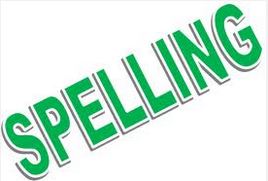In anticipation of the end of school holidays and beginning of the new school term I’ve been busy preparing. As a beginning teacher I’m continually developing my ability to support positive behaviour in the classroom. Whenever the positive reinforcement debate is raised in a large forum there are usually strong opinions on both sides of the topic. I personally have experienced a marked difference in positive behaviour in my classroom when I have intentionally increased behaviour specific praise (naming the positive behaviour) in my classroom. I am looking at how I can further improve and capitalise on this success for next term. I attended a professional development seminar last term and finally found some down time to catch up on reading some of the resources. I found this article “Praise’s magic reinforcement ratio: five to one gets the job done” by Flora (2000) enlightening.
I have heard the opinion or question several times that if you increase extrinsic rewards such as praise that students’ intrinsic motivation will decrease or they will become reliant on praise. I found Flora’s (2000) summary of Rawson’s (1992) study particularly interesting:
“Significant gains in intrinsic interest were found for reading, math, social studies, science and for general interest in academics. …The following school year 69% of the participants were reported by their teachers to be “doing markedly better in class” (p. 283). These results conclusively refute the myth that extrinsic rewards undermine intrinsic motivation. Reinforcement, including contingent praise, increase intrinsic interest.”
It was interesting to see how many different sphere’s of human relationships had been found to benefit from the 5:1 ratio of five approvals to one disapproval. I found Flora’s article thought-provoking as I came to realise the importance of the five approvals in moderating the negative effect of a disapproval. But also the importance of one disapproval to five approvals to keep the approvals meaningful and valuable. This article reinforced something that many of us already know and that is that non-specific praise e.g “good job” is not nearly as valuable as specific praise e.g. “You used an appropriate scale, great work”.
Flora also mentions the importance of varying words of praise. Here is a link to 101 phrases of praise (The Incredible Art Department, 2010) there are some fantastic suggestions here such as “Keep working on it, you’re improving” and “It’s such a pleasure to teach when you work like that.” But also a few doosies like this one that I think sounds more like an insult “You’ve got your brain in gear today”.
I’ve created a visual cue poster to help remind me everyday to try to aim for five approvals to one disapproval. I plan to put it up the back of my room where I will see it constantly but where it is out of line of sight of my students. You can access my poster here Five approvals to one disapproval visual cue poster.
References:
Flora, S. R. (2000). Praise’s magic reinforcement ratio: five to one gets the job done. The Behavior Analyst Today. Retrieved April 18, 2014, from http://www.thefreelibrary.com/Praise’s+magic+reinforcement+ratio%3A+five+to+one+gets+the+job+done.-a0170112823
The Incredible Art Department (2010). How to Praise Your Students. Retrieved April 18, 2014, from http://www.incredibleart.org/files/praise.htm







